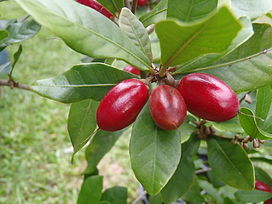These days, people in Ho Chi Minh City are again chasing after plants yielding “miracle fruits” for both their ornamental and purportedly medicinal use.
According to a number of ornamental plant shops and peddlers in the city’s districts of Go Vap, Tan Phu, Tan Binh, Phu Nhuan and 12, after a few years of waning appeal, the “miracle” plants are now in vogue again.
Ut Dinh, a plant peddler in Go Vap District, said that the plants’ prices now soar to VND350,000 (US$17), sometimes up to some millions dong, from VND150,000 previously.
The plants have been in great demand since the start of this month, plant shop owners said. They can now be found on such streets as Cong Hoa and Hoang Van Thu in Tan Binh District.
Minh Nguyen, owner of Ky Dieu seedling shop on Binh Thanh District Nguyen Thuong Hien street, who is considered a pioneer in growing the plant in Vietnam some 10 years ago, said he had travelled to the U.S. to study this plant.
According to Wikipedia, the plant, scientifically termed Synsepalum dulcificum, is known as “miracle fruit” or “miracle berry.”
The plant can reach 6m in height after 10 years.
Its berries, which get red when ripening, cause sour or bitter foods (such as lemons and limes) to taste sweet.
The effect is supposedly thanks to the fruits’ “miraculin”, which is used commercially as a sugar substitute.
This effect lasts for up to about one hour until the substance is washed away by saliva or hot drinks.
According to Hung, a plant shop owner, it typically takes three years for the plants to yield fruits.
The plants require limited care, including occasional watering and fertilizing.
The plants’ fruits and leaves are rumored to possess miraculous medicinal properties, such as relieving alcohol intoxication, and boasting beneficial effects for diabetics, hypertension patients and dieters.
Assc. Professor Bui Van Le, of HCMC University of Science’s Biology Faculty, said that the plants’ medicinal properties have yet to be proven.
It may at best change patients’ sense of taste, thus helping them absorb less sugar compared to conventional food consumption, he added.






















































